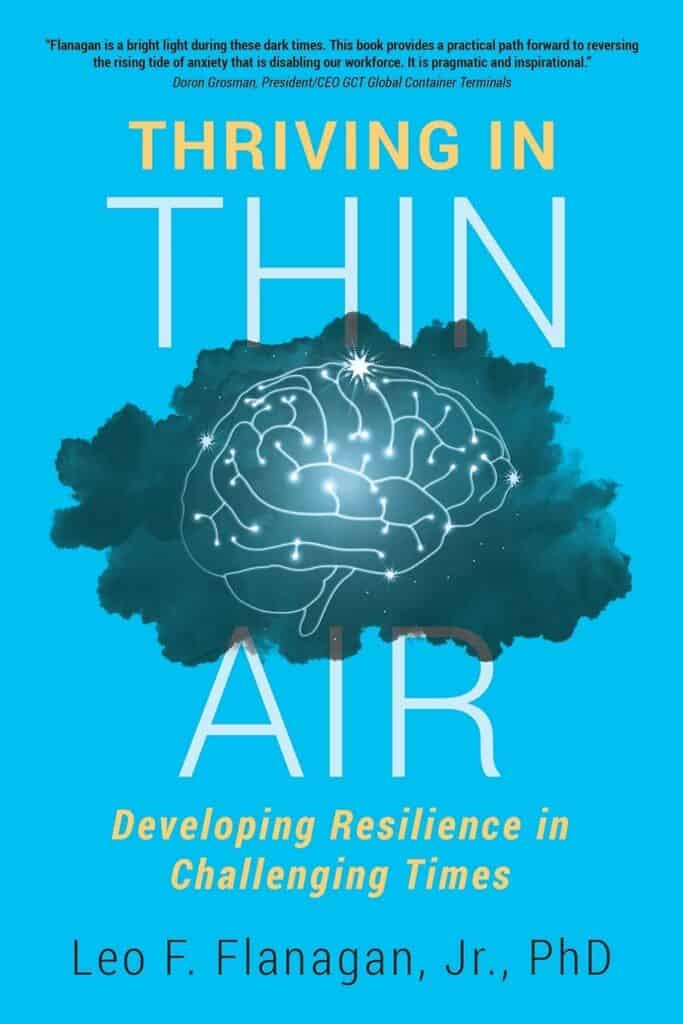Book: Thriving in Thin Air: Developing Resilience in Challenging Times
Reviewed by: Leah Parkhill Reilly
The Premise: In Thriving in Thin Air, Dr. Flanagan addresses the issues of chronic anxiety and overwhelm that are felt by many and provides an accessible and actionable guidebook that is hugely relevant for all – managers, individuals, parents – as we navigate an incredibly tumultuous world. Flanagan originally intended for the book to be a response to the chronic overwhelm of emotions, thoughts and strained he was observing in our modern digital world. He has since added to that case of change and the underlying neuroscience, layering on the added context of the Covid-19 pandemic and the multitude of systemic problems that have emerged.
The first few chapters set the stage for why resilience is so critical during what could be termed an anxiety epidemic. It doesn’t require much of a stretch of the imagination as to why people are stressed, and Flanagan clearly lays out the impact of the continuously changing world and how the neuroscience of resilience can help us to thrive amidst the adversity. Flanagan shares a 10-factor model of resilience in chapter 3 and the remainder of the book is largely devoted to that model with each chapter representing a resilience factor, the associated tools to build that factor and then an explanation as to how and why the tool works.
The Bottomline: I really appreciated this book on several levels. It was incredibly practical and laid out in a manner that was clear, concise, and factual. Each chapter related to the resilience model had a set of tools, an explanation of how to use the tools and then an explanation of the science behind why they work. No fluff. Just a clear guide on how to take control in a world that is a bit chaotic. The onus is on the reader to do the work and apply the tools.
Personally, I love it when an author cuts to the chase which Flanagan did before even starting on his case for why we’re in need of resilience. He essentially writes, “Hey if you’re stressed and overwhelmed, go directly to chapter 4, work on it, move onto chapter 5 and then chapter 6, practice those techniques for a few weeks and then come back to the start of the book.” Wonderful and so incredibly empathetic to the reader who maybe picked up the book because they’re struggling or have team members are challenged.
Recommendation: Highly recommended. Practical, accessible toolkit to help build your own resilience, or that of your team or those around you.




